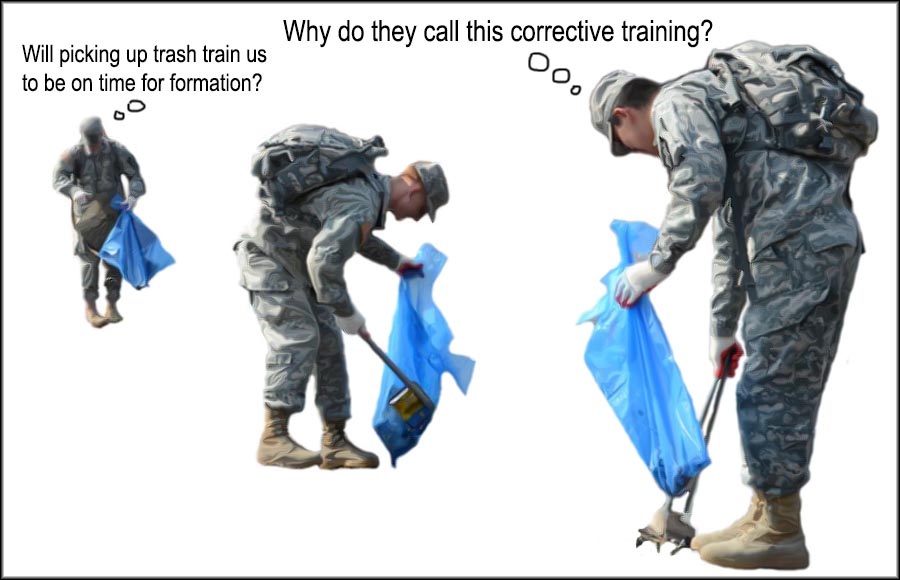Army Training Regulation : What it is
What is the Army Training Regulation? As a member of the United States Army or someone interested in the military, it is crucial to understand the importance of Army Training Regulations (ATRs). These regulations serve as guidelines and standards for conducting training activities and ensure that all soldiers are adequately prepared to carry out their duties effectively. In this article, we will delve deeper into what Army Training Regulations are, why they are necessary, and how they impact the overall military training process. ATRs are comprehensive documents that outline the policies, procedures, and guidelines for training and development within the U.S. Army. They cover a wide range of topics, including physical training, marksmanship, tactical drills, maintenance procedures, and much more. These regulations provide a framework for commanders, officers, and soldiers to plan, execute, and evaluate training activities to maintain operational readiness. Creating a solid foundation: The Army places great importance on building a strong foundation for its soldiers. As such, the training regulations are designed to ensure that every soldier receives the necessary knowledge and skills required to meet the demands of their specific roles. By adhering to these regulations, the Army can maintain uniformity in training across all units and personnel, regardless of their geographic location or unit assignment. The Army's commitment to training excellence: The U.S. Army is widely recognized for its commitment to training excellence. The ATRs play a crucial role in shaping this commitment by providing a standardized approach that ensures cohesion, efficiency, and effectiveness in the training process. By having well-defined training regulations, the Army can achieve the following: 1. Consistency: With ATRs in place, all soldiers undergo a consistent training process regardless of their unit or location. This consistency helps build uniformity and ensures that every soldier is equipped with the necessary skills and knowledge, fostering a sense of confidence and readiness within the military force. 2. Accountability: Accountability is a fundamental value within the Army. The ATRs provide a clear framework for commanders and leaders to assess and document the progress of their soldiers during training. This not only helps identify areas for improvement but also holds individuals accountable for their performance. 3. Safety: Training activities are inherently risky, especially when it comes to combat training. The ATRs outline safety procedures, precautions, and protocols that must be followed during all training exercises to minimize the risk of accidents or injuries. By prioritizing safety through these regulations, the Army ensures the well-being of its soldiers while maximizing training effectiveness. Exploring the impact of ATRs: ATRs have a profound impact on the overall military training process. They serve as invaluable resources for soldiers and leaders alike, guiding them through each phase of their training journey. Let's take a closer look at the specific areas where ATRs make a difference: 1. Physical Training (PT): PT is an essential aspect of military training, helping to improve soldiers' physical fitness, endurance, and resilience. ATRs outline the specific exercises, routines, and standards to be followed during PT sessions, ensuring that soldiers are adequately prepared physically. Each regimented PT session is designed to enhance soldiers' strength, agility, and overall physical readiness. 2. Marksmanship and Weapons Training: Proficiency in marksmanship and weapons handling is crucial for any soldier. ATRs provide detailed guidelines on the safe and effective use of firearms and other weapons. These regulations cover everything from proper weapon maintenance and storage to marksmanship qualification standards. By adhering to ATRs, soldiers can improve their combat skills and ensure safety during weapons training. 3. Tactical Training: Tactical drills and exercises are pivotal in preparing soldiers for real-life combat scenarios. ATRs provide a blueprint for conducting various tactical training activities, such as patrolling, field maneuvers, and convoy operations. These regulations ensure that soldiers are trained to operate seamlessly as a team, understanding their roles, responsibilities, and the overall concept of operations. Frequently Asked Questions (FAQs): Q1: Are Army Training Regulations applicable to all branches of the military? A1: Army Training Regulations primarily focus on the U.S. Army. However, certain regulations may also have relevance and applicability to other branches of the military, as they share common principles and training objectives. Q2: How often are the Army Training Regulations updated? A2: The Army Training Regulations are subject to periodic updates to reflect changes in technology, tactics, doctrine, and lessons learned from past conflicts. It is essential for soldiers and leaders to stay updated with the latest versions to ensure compliance and effectiveness in training. Q3: Can soldiers provide feedback or suggest improvements to Army Training Regulations? A3: Yes, the Army encourages soldiers to provide feedback and suggestions for improving ATRs. This enables the continuous refinement of training practices and ensures that the regulations remain relevant and effective. In conclusion, Army Training Regulations play a critical role in shaping the training process within the U.S. Army. These regulations provide a standardized framework for all soldiers, ensuring consistency, accountability, and safety throughout the training journey. By adhering to ATRs, soldiers acquire the necessary skills, knowledge, and confidence to fulfill their roles effectively and maintain the highest levels of operational readiness.  Image Source : www.abebooks.com
Image Source : www.abebooks.com  Image Source : armymilitary.net
Image Source : armymilitary.net  Image Source : armyalms.net
Image Source : armyalms.net  Image Source : tesdaoais.com
Image Source : tesdaoais.com  Image Source : www.pdffiller.com
Image Source : www.pdffiller.com  Image Source : armyalms.net
Image Source : armyalms.net  Image Source : beardonbrother.blogspot.com
Image Source : beardonbrother.blogspot.com  Image Source : armymilitary.net
Image Source : armymilitary.net
9781468136036: Training: Army Training And Leader Development (Army
 Image Source : www.abebooks.com
Image Source : www.abebooks.com Army Training Meeting Regulation - Army Military
Training Army Regulation - Army ALMS
 Image Source : armyalms.net
Image Source : armyalms.net Training Regulation
Fillable Online TRADOC Regulation 1-11 Headquarters, US Army Training
 Image Source : www.pdffiller.com
Image Source : www.pdffiller.com Training Army Regulation - Army ALMS
 Image Source : armyalms.net
Image Source : armyalms.net Shaving Profile Army Regulation
 Image Source : beardonbrother.blogspot.com
Image Source : beardonbrother.blogspot.com Army Mrt Regulation - Army Military
9781468136036: training: army training and leader development (army. Fillable online tradoc regulation 1-11 headquarters, us army training. Shaving profile army regulation. Training regulation. Army training meeting regulation